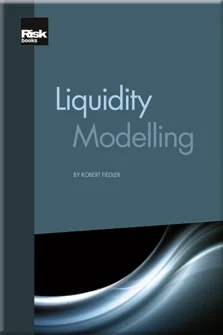Capturing Uncertainties
Capturing Uncertainties
Introduction to 'Liquidity Modelling'
Setting the Scene: Why Liquidity Is Important in a Bank
What Is Liquidity Risk?
Illiquidity Risk: The Foundations of Modelling
Capturing Uncertainties
A Template for an Illiquidity Risk Solution
The Counterbalancing Capacity
Intra-Day Liquidity Risk
Liquidity Transfer Pricing and Limits
The Basel III Banking Regulation
According to a quote attributed to Albert Einstein, a theory should be “as simple as possible, but not simpler”.
At the moment we do not actually know how simple or sophisticated the above described illiquidity conditions are, as we have so far only symbolically set the FLE and CBC in mathematical relationships (such as adding and comparing given numbers) without properly describing how we determine both FLE and CBC.
We will start with the simplest “theory” and only consider deterministic cashflows of existing transactions; thus, the FLE can be unequivocally determined.
If we compare the results with reality, we are likely to find differences between our forecasts and the actual results, which means that either we have modelled the problem inadequately and thus need to change our approach completely (hopefully not), or we have oversimplified the problem and thus need to refine the modelling. If our theory is adequate we will be able to decrease its deviation from reality step by step and thus continually improve its results.
If the cashflows of transactions are univocally preassigned and known, we call them deterministic cashflows; they bear no uncertainty. We further
Copyright Infopro Digital Limited. All rights reserved.
As outlined in our terms and conditions, https://www.infopro-digital.com/terms-and-conditions/subscriptions/ (point 2.4), printing is limited to a single copy.
If you would like to purchase additional rights please email info@risk.net
Copyright Infopro Digital Limited. All rights reserved.
You may share this content using our article tools. As outlined in our terms and conditions, https://www.infopro-digital.com/terms-and-conditions/subscriptions/ (clause 2.4), an Authorised User may only make one copy of the materials for their own personal use. You must also comply with the restrictions in clause 2.5.
If you would like to purchase additional rights please email info@risk.net











